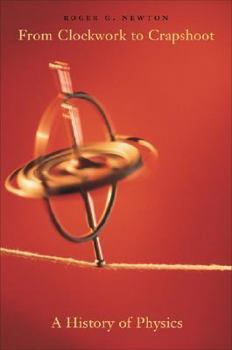From Clockwork to Crapshoot: A History of Physics
Select Format
Select Condition 
Book Overview
Roger Newton presents a history of physics from the early beginnings, with the associated mathematics, astronomy and chemistry. He gives explanations of the scientific concepts at issue, thumbnail sketches of the protagonists, and descriptions of the changing instruments that enabled scientists to make their discoveries.
Format:Hardcover
Language:English
ISBN:0674023374
ISBN13:9780674023376
Release Date:January 2007
Publisher:Belknap Press
Length:340 Pages
Weight:1.20 lbs.
Dimensions:1.2" x 5.8" x 8.4"
Customer Reviews
1 rating
Six thousand years of physics
Published by Thriftbooks.com User , 18 years ago
The book describes six thousand years of science, beginning with Babylon and Egypt, which developed many practical applications and rules in the natural world. The author progresses quickly to ancient Greece and the beginning of abstract reasoning and speculation. We learn about the tight connection between mathematics and physics, indeed this book may be regarded as a history of math as well. Newton's writing is clear and easy to follow - at least until the time of Einstein, relativity and quantum mechanics. Then the subject matter makes it difficult to follow the narrative, and I had to re-read parts several times. You will learn just what a "quantum jump" is (p. 224). It is very small, and happens in the electron shell of the atom. There is some comment (p. 270) on why Lord Kelvin's limit on the age of the earth was overthrown. You will also learn how and why probability and statistics have become prominent parts of our understanding of matter and energy, and why the firm deterministic laws of physics have had to be abandoned. The book ends with the modern, - and still tentative, - understanding of the structure of the atom. The atom in turn enlightens our understanding of the universe, and the history of the cosmos since the "Big Bang." On the whole, a very satisfying read.





